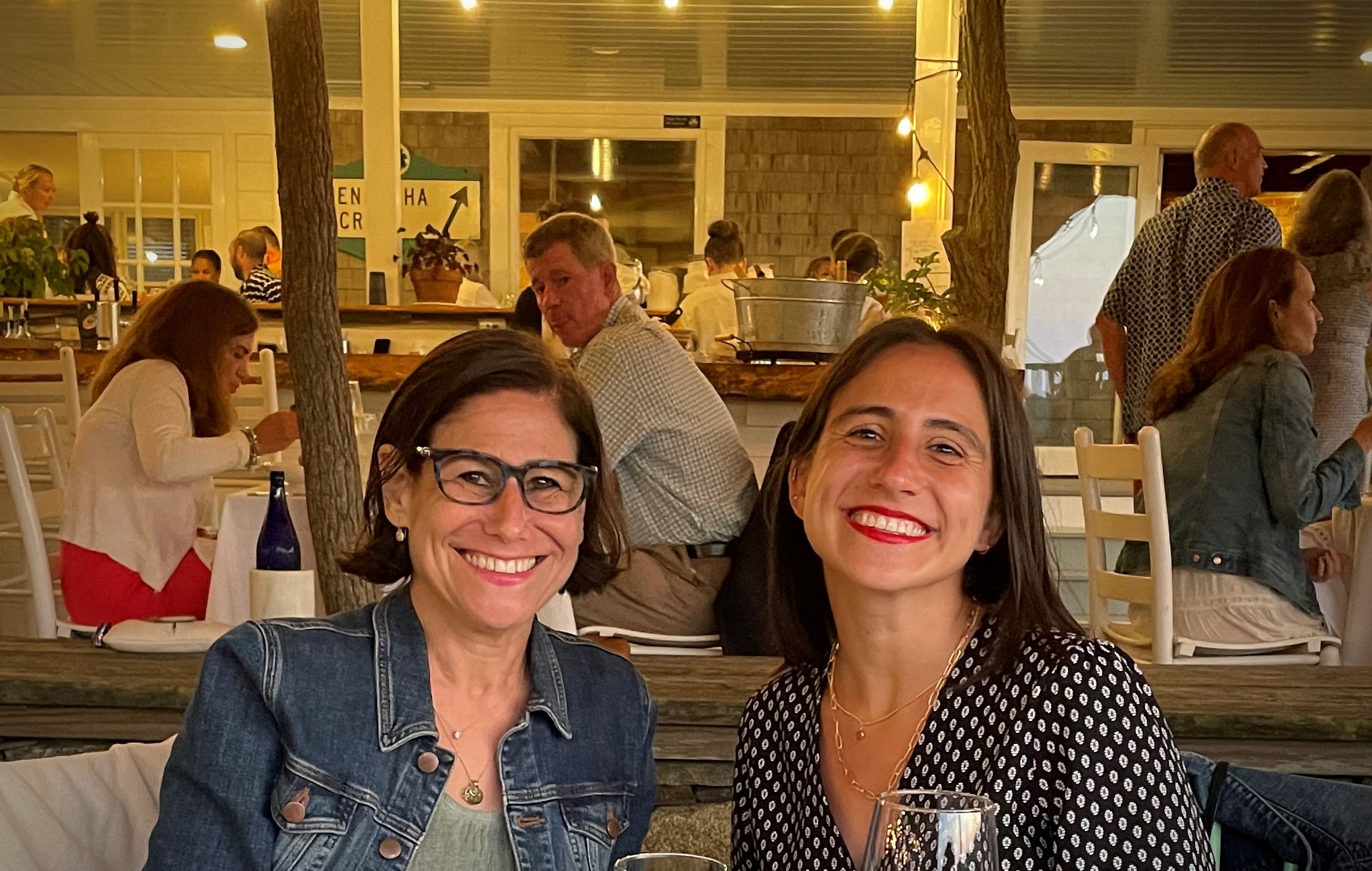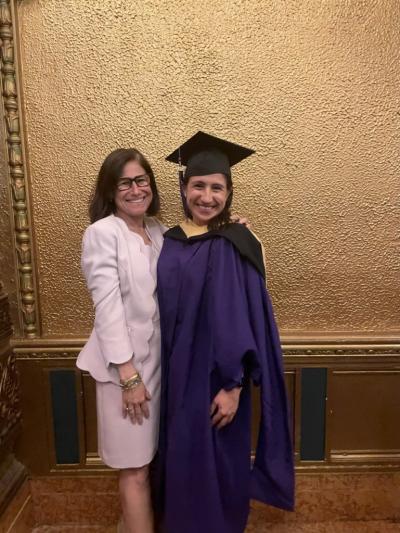Mother, Daughter Share a Bond Beyond the Biological: ADAA Membership, Opportunities, and a Path to Making a Difference
Mother, Daughter Share a Bond Beyond the Biological: ADAA Membership, Opportunities, and a Path to Making a Difference

At the Anxiety and Depression Association (ADAA), we value each and every one of our members and feel that all of them are a distinguished part of the ADAA “family”. But when we have members who are actually related – mother, son, father, daughter, uncle, aunt, niece, nephew (you see where we’re going here) – we can’t help but find a way to highlight not only the relationship that they have to each other but to ADAA’s work and mission.
Members Ruth Lippin, LCSW, JD, and Rachel Lippin-Foster, LCSW embody a delightful, astute, and extremely gracious mother and daughter spirit that we consider a benefit to ADAA and the broader field of mental health clinicians. Ruth and Rachel spoke to ADAA about their shared career paths, ADAA membership, annual conference attendance and support, and an unconventional relationship with cockroaches and dead spiders.
The Path to Becoming a Therapist is Paved with Many Roads
Ruth went to the Columbia University School of Social Work with a very specific purpose. She wanted to be a clinician who treated anxiety and related disorders. And that she has done. For the past 25 + years, Ruth has had a successful private practice in Manhattan treating children, adolescents, and adults.
Before becoming a therapist, Ruth had a meaningful career as a public interest attorney in New York City. However, having suffered from her own anxiety disorder in her late teens and 20’s and finding it very difficult to find evidence-based treatment, she decided she could help more people as a clinician.
“I had an anxiety disorder, and I was lucky enough to stumble upon one of the few therapists who was involved in starting ADAA and was doing in-vivo Exposure and Response Therapy (ERP),” Ruth told ADAA. Ruth credits that treatment with giving her the skills and knowledge she needed to live the life she wanted and not the small life anxiety had in mind for her.
“One of my main motivations was wanting to have children and not wanting to pass on the anxiety I experienced,” she said, recalling how she needed to be “a fully functional person” to be the mother she wanted to be. Ruth said that driving long distances caused her severe anxiety, and even before her children were born, she knew that she wanted to be a mom who could drive as far as needed to go visit her children in college, not depending on anyone to drive her.
“I still remember that first time, 25 years later, driving up to Maine where Rachel was at college,” she beamed. “It was exhilarating!”
Her daughter Rachel was still an undergraduate, but the seeds of becoming a therapist had already been planted. Rachel remembers growing up with a mother whose practice sometimes brought unusual items into their own home. She and her friends thought her mom had an interesting and unique job.
“My favorite story to tell people is that my first and only pet as a child was a pair of hissing Madagascar cockroaches!” she exclaimed.
Rachel explained how her mother had a client who was afraid of cockroaches. As a true ERP therapist, she purchased Madagascar roaches and would bring them from their home to her office, once a week, to treat her patient.
“I hated having them in our house, but at the same time, I also thought it was kind of cool,” Rachel recalled. “We always had something – dead tarantulas or fake vomit – and it seemed like a job that was fun, interesting, proactive, and made a difference in people’s lives.”
Rachel said she always knew she wanted to work in mental health, and it helped to have a mother who was always excited to go to work and was also happy to come home and spend time with her family. Rachel knew she, too, wanted a job where she could help people, and have a flexible schedule while raising her own children. Soon enough, the daughter was traveling down the same road as her mom.
The Intersection of Practice and Professional Development
Early on, Ruth realized, as Rachel would many years later, the important role a professional community could play in building a thriving clinical practice. She knew it would allow her to network with other professionals and continue learning and acquiring skills. She understood that it was an integral part of her career development.
“I heard about ADAA and went to my first conference, and that’s when I found my professional home,” Ruth said. “It was a lovely, welcoming place where I could continue my education and feel a part of a professional clinical community.”
Ruth highlighted how every year at the annual conference, she gains insight into the newest and best evidence-based treatments and takes advantage of the webinars and all the learning opportunities throughout the year. Ruth has been a co-chair for the Child and Adolescent Special Interest Group (SIG) for several years and values the peer-to-peer connection she has with the group.
While Ruth’s initiation to ADDA was over 20 years ago, her daughter Rachel, who became a member in 2017, reiterated the benefits of being part of ADAA and the welcoming feeling she too experiences.
“There is an incredibly welcoming quality to ADAA,” Rachel said. “I’ve made friends and met colleagues across various disciplines, working on different aspects of anxiety and depression. There are so many ways to slice the cake when approaching any mental health issue, and it was an eye-opening experience to attend the conferences.”
Both mom and daughter expressed that being a part of the ADAA community expands their knowledge and perspective. They pointed out that clinicians and other mental health professionals are often engrossed in their own daily work. Attending ADAA meetings, webinars, and even social events allows for a view outside of what Rachel called the “bubble” of one’s individual practice.
“To be able to mesh minds with others in the field, get differing perspectives, and attend these talks and workshops is so essential,” she told ADAA. “I encourage my colleagues to attend because how do you keep growing and developing and become a better clinician if you’re not pushing yourself and learning from others.”
Rachel is the incoming co-vice chair of the Early Career SIG and a recipient of the 2022 Alies Muskin Career Development Leadership Program (CDLP) award. While Rachel had the added advantage of being the daughter of an already established ADAA member and perhaps knew more about ADAA than the average clinician before joining the community, she encourages more social workers, in particular, to become members, attend conferences, and apply for awards and scholarships through ADAA.
“I was one of only two social workers in the CDLP program in 2022. I’d love to see a more diverse base at ADAA,” Rachel said. “In the Early Career SIG, we are working to attract more members, and we’re highlighting the various ways one can be in the mental health field by disseminating information about the various mental health degrees to those interested in entering the field.”
Opportunities for Moms, Daughters, and Everyone Else
 Ruth recalled how more than 20 years ago, there were very few master-level clinicians within ADAA membership, but that the relationships she formed with fellow ADAA members Elizabeth DuPont Spencer, LCSW-C, and Kimberly Morrow, LCSW, and their work together helped open the doors to a more diverse community. Elizabeth’s father, Robert DuPont, MD, was a founding member of ADAA in 1980, when it was known as the Phobia Society of America, and held meetings in his den at his home in Washington, DC, with fellow founder Jerilyn Ross.
Ruth recalled how more than 20 years ago, there were very few master-level clinicians within ADAA membership, but that the relationships she formed with fellow ADAA members Elizabeth DuPont Spencer, LCSW-C, and Kimberly Morrow, LCSW, and their work together helped open the doors to a more diverse community. Elizabeth’s father, Robert DuPont, MD, was a founding member of ADAA in 1980, when it was known as the Phobia Society of America, and held meetings in his den at his home in Washington, DC, with fellow founder Jerilyn Ross.
More than 40 years later, Ruth appreciates the strides ADAA has made and is delighted that her daughter has joined the professional family. Both Ruth and Rachel admit mom had a big influence on “pulling” her daughter into the ADAA fold, but that Rachel quickly found her own footing and ran with it.
“My mom introduced me to ADAA, but I made the decision that if I want to really become involved and network, I have to jump in,” Rachel said. “I attended the annual conference in San Francisco (2017) before I started graduate school and then the Denver conference (2022) as a practicing clinician.”
Rachel takes every opportunity to credit ADAA with helping to obtain her current job at Cognitive & Behavioral Consultants (CBC) in White Plains, New York. At CBC, Rachel treats anxiety and OCD disorders across the lifespan. She met and networked with the co-founder and co-director of CBC, Dr. Lata McGinn, and took advantage of the Early Career Networking Lunch at the conference, where she had lunch with her current supervisor, Dr. Rachel Busman, who directs the child and adolescent anxiety and related disorders program.
When talking about her daughter, Ruth has a huge smile on her face. She says she watches Rachel in awe as she negotiates being an early career clinician.
“She has an innate ability to relate to people,” said Ruth. “She has a very strong work ethic and takes the practice so seriously. I am so proud of her.”
And at ADAA, we take pride in all our members and feel that even if we aren’t related, there is an intrinsic connection in our professional community.













